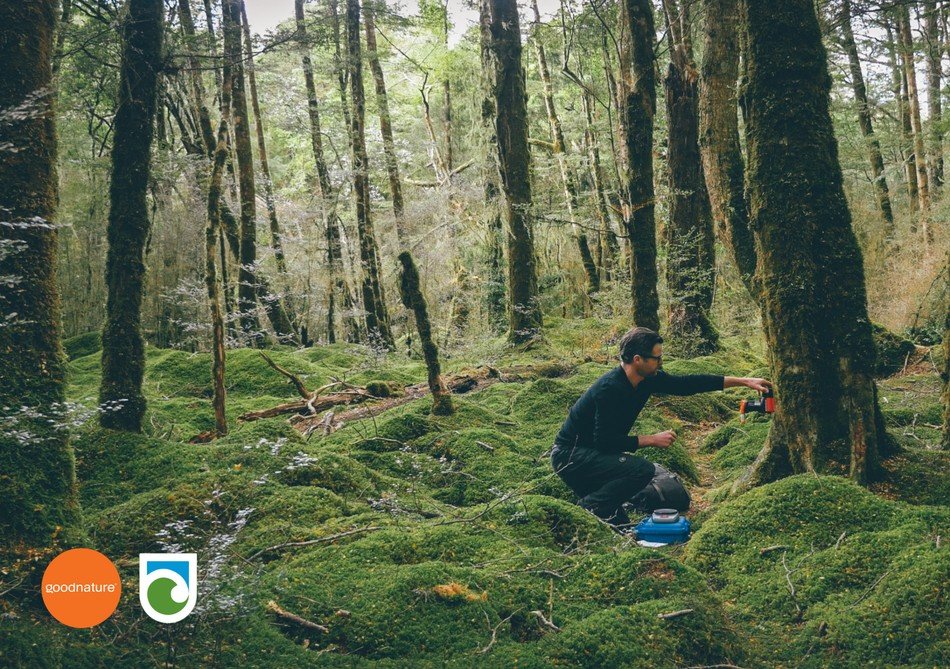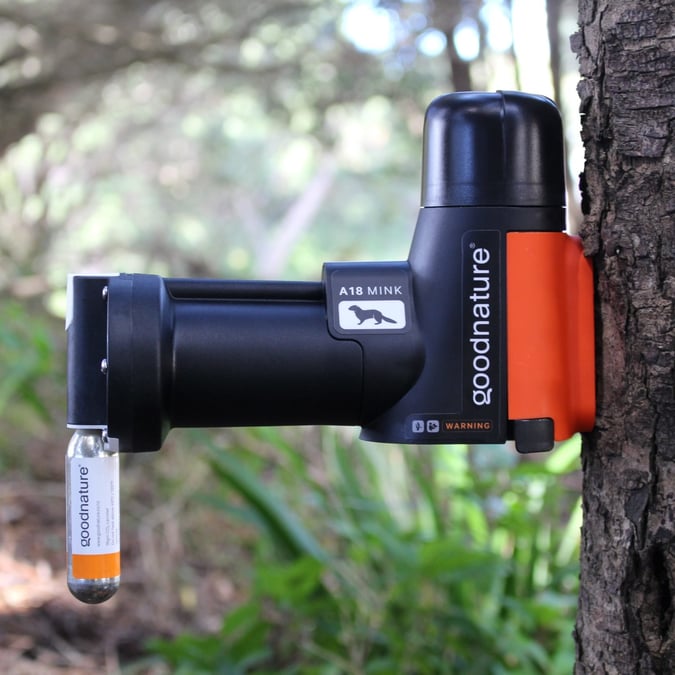Goodnature snares new traps called Chirp that tracks trappings via bluetooth

Since its inception, Goodnature has met mounting public pressure and growing conservation demand with new developments.
Controversially, reports have exposed misuse of Goodnature traps leading to a series of alleged injuries to the kiwi – as well as reported deaths to weka. The cause of the deaths are heavily contested, and not specifically blamed on the traps themselves, but the misuse of them. However, Goodnature has actively combated the bad news with new innovations. Namely, the parrot excluder developed in October, and now Chirp, which sees the traps step into the digital era.
Chirp is available now as addition which can be attached to existing traps. When an animal is killed by a trap, the strike time is stamped and recorded allowing trap users to gain accurate insights into the performance of traps in the landscape. Because traps are located using GPS from the trap user’s smartphone, all information can be assessed relative to time and place meaning big data can be gathered on how pests utilise the New Zealand landscape. Anyone who walks within range of a trap with the newly-released Goodnature Chirp app, can collect data and pass it on to their neighbour, community or conservation project without any additional hardware or infrastructure.
Goodnature co-founder and design director Robbie van Dam says that the new device is an important new tool for New Zealanders as it provides trap users with more contextual information, which is advantageous in controlling invasive species.
Van Dam says, “Chirp pushes data to the Goodnature Chirp app, with time, date and temperature aligned to the name and location of the trap that was triggered.
“The aim is to build a more comprehensive idea of what’s happening on the ground in areas that are being trapped. The data collected will mean trap users are better informed and this will positively impact future decisions on trap layouts so as to better target pests.”

Chirp uses Bluetooth communication sealed into the hardware of the traps. The electronics sit in a detachable cap, which can be retrofitted to existing A24 traps. Bluetooth works for portable equipment that require a connection between two devices as it only requires a low bandwidth. Chirp consumes extremely low amounts of energy, so the caps can allegedly transmit and function for two to five years before a simple battery change is required.
All strikes recorded by a chirp trap are also shared via the Goodnature Chirp app, where geotagged traps appear on a New Zealand map for anyone to view. Users can click into each trap and see its strike history, with correlating time and weather information. If a chirp trap is in a remote location like a national park, its recorded data will be picked by anyone with the Chirp app who comes within a 50 metre radius. The new data harvested from the trap is then sent straight to the cloud. That information is then sent to the rightful owner of the trap who has it synced to their own app, then dispersed across the New Zealand trap map for everyone to see.

Chirp also calculates Co2 consumption and calendarises the bait, so users receive a notification when it’s time to maintain their trap.
“We are always looking to improve our technology so that it is the most effective it can be. With Chirp, we wanted to create a device that allowed us to get more insights out of our technology so our improvements are even more accurate,” says van Dam. “Our traps are some of the world’s most advanced and are used conservation projects globally to help restore native bird species which are killed by invasive pests. Goodnature’s base technology is fantastic and our mission is to keep creating the most pragmatic, technologically-advanced solutions for ecological balance.”

Chirp will also be helpful around the home and for those trapping indoors, as users are notified instantly to when a pest is killed by their trap, which makes for a quicker, easier clean up. The information fed from backyard networks will contribute to the nationwide map of where traps are operating and their performance.
“Goodnature is trying understand and measure how animals behave relative to each other, which this new technology will really help with,” says van Dam.
“For example, if one trap removes a hectare worth of pests, what does that mean for the next hectare? What happens to neighbouring areas if pests are eradicated in a controlled zone?”
Goodnature’s A24 with Chirp will first be put into use as part of Wellington’s Capital Kiwi project – a community-led initiative to make Wellington pest-free so to reintroduce kiwi birds into the area. The Capital Kiwi project area covers 23,000ha of land, with more than 4000 traps expected to be deployed. The first 800 of the project’s traps (a combination of Goodnature A24s and DOC250s) have been installed, with trap and Chirp activation now complete.




